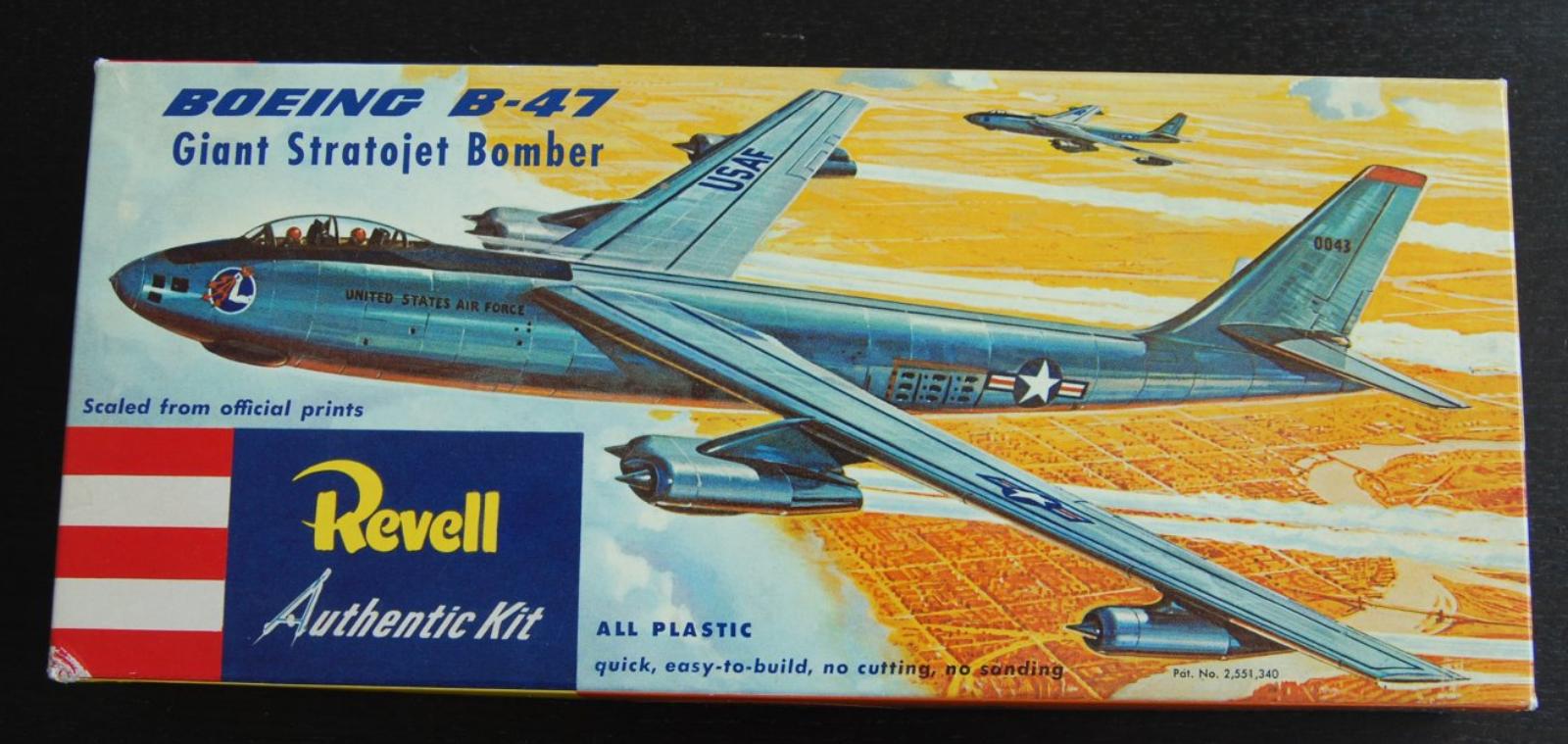Manufacturer: Revell
Scale: 1/113
Additional parts: none
Model build: Jul-Aug 2012

Manufacturer: Revell
Scale: 1/113
Additional parts: none
Model build: Jul-Aug 2012
Colonel Maggie "Iron Fist" Daniels adjusted the mirrored visor of her helmet, the B-47's pre-flight hum thrumming through her bones. This wasn't what the grand old Stratojet was built for – not these humid Southeast Asian jungles instead of the icy expanse of the Cold War. Nicknamed "The Ghost of Fifty-One" by the crew, the B-47 was a relic, dusted off for a new fight. Maggie gripped the control yoke, a bittersweet feeling settling in her gut.
Tonight's mission: a fortified North Vietnamese barracks complex, intel suggesting a major offensive buildup. Maggie's B-47, christened "Hallowed Halls," was the only one crazy enough (or desperate enough) to be modified for laser-guided bomb delivery. Her crew, a mix of grizzled veterans and eager rookies, relied on her steady hand and nerves of steel.
The aged bomber lumbered into the sky, a lumbering giant compared to the nimble fighters flanking them. As they neared the target zone, chatter on the comms crackled with tension. Suddenly, a SAM streaked skyward, a fiery orange contrail painting the night. "Hallowed Halls, evasive maneuvers!" barked Lieutenant Davis, the young navigator. Maggie fought the wheel, the B-47 groaning in protest as she pushed it into a teeth-rattling climb. Another fiery blossom erupted nearby, uncomfortably close.
"Laser lock acquired!" came the strained voice of Captain Rodriguez, the Weapon Systems Officer. Maggie lined up the bomber, the weight of hundreds of lives – Vietnamese civilians potentially caught in the blast zone – pressing on her. "Fox One!" Rodriguez's voice cut through the tension. The Paveway LGB, a beacon of hope under the star-dusted night, arced down, painting a laser line on the target complex.
A blinding explosion engulfed the barracks, the shockwave rocking the B-47. Cheers erupted on the comm channel, quickly cut short by the frantic voice of the radar operator. "Multiple bogies, MiGs! Coming in fast!" Four sleek MiG fighters materialized on the radar, hungry for a kill.
"Hallowed Halls, we don't have the firepower for this!" Davis yelled. Maggie gritted her teeth. This wasn't part of the plan. "We can outrun them, maybe," she said, her voice betraying a sliver of doubt. The chase was on, a desperate game of cat and mouse across the Vietnamese landscape. The B-47, despite its bulk, surprised them all with its surprising turn of speed, the upgraded J47 engines straining but holding.
Just when Maggie thought they might escape, a searing pain ripped through the wing. One of the MiGs had gotten lucky, its missile finding its mark. Smoke billowed, alarms blaring. "We're losing altitude!" Davis shouted. Panic threatened to engulf Maggie, but years of training took over.
"Brace for emergency landing!" she roared, steering the crippled bomber towards a clearing in the jungle below. The landing was a bone-jarring affair, the B-47 scraping across the treetops before slamming down, its undercarriage crumpling. Dazed but alive, the crew stumbled out, adrenaline coursing through their veins.
Hallowed Halls was done, a smoldering testament to a bygone era pressed into service. But the mission, thanks to that single laser-guided bomb, had been a success. As dawn painted the sky, Maggie surveyed the wreckage, a strange sense of pride swelling in her chest. The Ghost of Fifty-One had flown its last mission, but it had shown its spirit wasn't quite ready for retirement.

The Boeing B-47 Stratojet was the United States Air Force’s first strategic jet bomber, entering service in 1951 and serving as a key element of Strategic Air Command until its withdrawal in the mid-1960s. While retired from the nuclear strike role by 1965, reconnaissance versions (RB-47) continued in limited use until 1977.
By the early 1970s, the air war in Vietnam had entered a new phase with the introduction of Paveway laser-guided bombs (LGBs). These precision weapons promised far greater accuracy than conventional bombing methods. The USAF sought to evaluate multiple delivery platforms for these new systems, ranging from fighter-bombers like the F-4 Phantom II to larger strike aircraft.
As part of these trials, a retired B-47E airframe was selected and converted into a testbed for LGB employment. The aircraft was equipped with externally mounted laser illumination pods and updated avionics to integrate the Paveway guidance system.
In July and August 1972, the modified B-47 was deployed to Andersen Air Force Base, Guam, for operational evaluation in Southeast Asia. Over the course of five combat sorties, the bomber conducted strikes against North Vietnamese infrastructure and supply depots.
While the aircraft demonstrated the ability to deploy Paveway munitions, several shortcomings quickly became apparent:
Following the five trial missions, the project was quietly terminated. The B-47 was deemed unsuitable as a tactical LGB delivery platform, and the aircraft was returned to the United States, where it was eventually scrapped.
Nevertheless, the experiment contributed valuable data on the integration of precision-guided munitions with bomber platforms. The lessons learned informed later developments, including the eventual adaptation of larger bombers such as the B-52 Stratofortress for precision strike roles in the late Cold War and beyond.
The model is a pretty simple Revell 1:113 B-47 with less than 20 parts which was sitting in a shelf here for some years.
Additional parts, fuel tanks and sensor pods - are form the spare parts box. Colors are Revell Aqua Color, and most decals are the original ones, plus some additional from a Matchbox Corsair kit. Some of the decals started to silver out a bit, despite the use of different finishes.